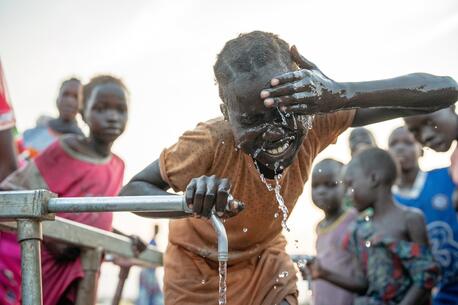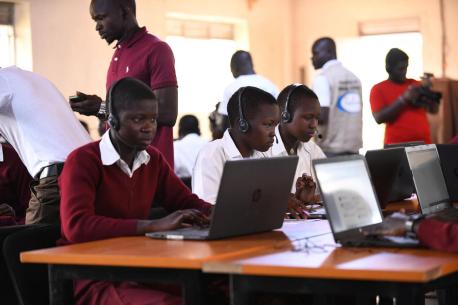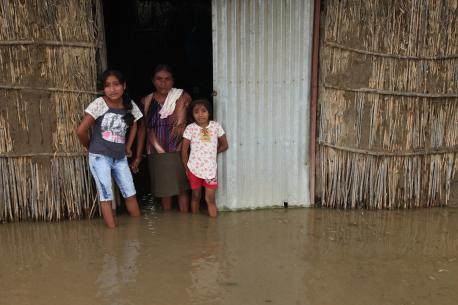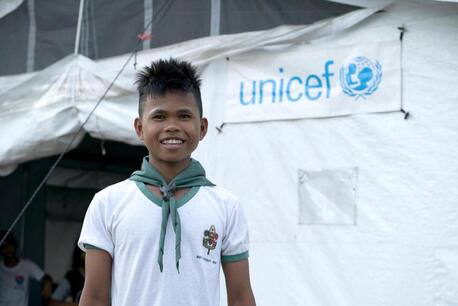
The Case for Supporting UNICEF
Every year, UNICEF USA calls on supporters to urge members of Congress to help ensure continued support for UNICEF's work from the United States Government through a voluntary contribution to UNICEF's core resources. This is an important source of flexible funding that helps UNICEF address the needs of children at scale and through innovative solutions. Learn more, including how to help.
Working in pursuit of a more equitable world for children takes commitment and leadership
When disaster strikes, UNICEF responds. Emergency operations kick into high gear, supplies are shipped and teams are deployed on the ground to meet immediate needs.
But children and families have ongoing, long-term needs too. Working in pursuit of a more equitable world — one where every child is healthy, educated, respected and protected — takes time. It takes innovation, persistence, trial and error. It takes cultivating fruitful partnerships in communities and countries and across regions to ensure better outcomes for children — not only in a crisis, but over the long term.
It’s about turning promising ideas into proven solutions — and then scaling them up globally. It’s about building stable, resilient communities that can better withstand future shocks.
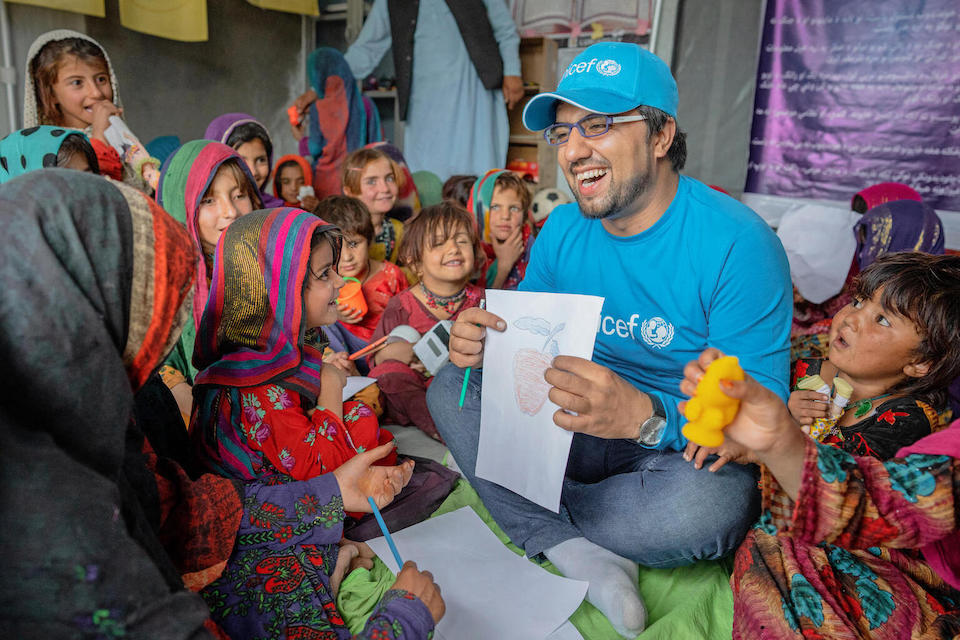
This is the work that often happens out of the spotlight. It may not make news headlines, yet it is still crucial to UNICEF’s mission. And, like everything else UNICEF does, it doesn’t happen without voluntary contributions from supporters.
UNICEF relies on donations from governments, businesses, foundations, civil society organizations, individuals and others to fund ongoing work across all of its pillar programs, in health and immunization, nutrition, education, child protection and more. Donations provide the resources UNICEF needs to keep innovating and increasing its impact for children, day by day, year by year.
The United States Government has long been a major funder of UNICEF, along with the governments of Germany, Japan, Sweden and many other countries. This contribution is a separate funding stream, apart from the donations from the private sector (including individuals) that come to UNICEF through UNICEF USA.
Every year, UNICEF USA advocates for Congress to approve funding that includes core resources for UNICEF — the most flexible form of funding — at an amount that reflects the pressing needs of children globally, including the need to continue strengthening systems that are essential for their care and protection.
This year, for fiscal year 2024, UNICEF USA is urging Congress to approve $175 million to support UNICEF's important work for children.
For a glimpse into how core resources are invested, here are three examples of how UNICEF leverages these flexible funds to drive innovative, sustainable solutions to some of the world's toughest problems.
Fighting child malnutrition, saving children’s lives with Ready-to-Use Therapeutic Food (RUTF)
Children who are severely malnourished require specific treatment. In the early 2000s, UNICEF used core resources to invest in developing Ready-to-Use Therapeutic Food (RUTF), a nutrient-rich peanut paste caregivers can use to treat malnourished children at home.
RUTF comes in a one-dose foil sachet and requires no special storage or preparation, such as refrigeration or mixing with water. Packed with calories and protein, with a taste that is similar to peanut butter, RUTF has saved millions of children’s lives around the world. UNICEF procures and distributes roughly 75–80 percent of the global supply of RUTF. A 72-sachet box costs $41.
In 2022, UNICEF delivered over 68,700 metric tons of RUTF to 64 countries — enough RUTF to treat 5.1 million children for severe wasting. It was an historic response — the largest nutrition response on record — made possible with generous supplemental funding from governments and private partners, including the U.S. Government, and years of UNICEF investing in building systems, supply chains and programs in partnership with national governments all across the globe.
For the past three decades, in fact, UNICEF has worked to expand and diversify the number of RUTF producers, build capacity and significantly increase production to meet rapidly rising demand, particularly in 15 countries hit hardest by chronic food crises. At current RUTF production levels, however, UNICEF and the humanitarian community are still reaching only 1 child out of every 3 who need it.
Increases to core resources would supply the additional funding necessary to support more equitable access to RUTF.
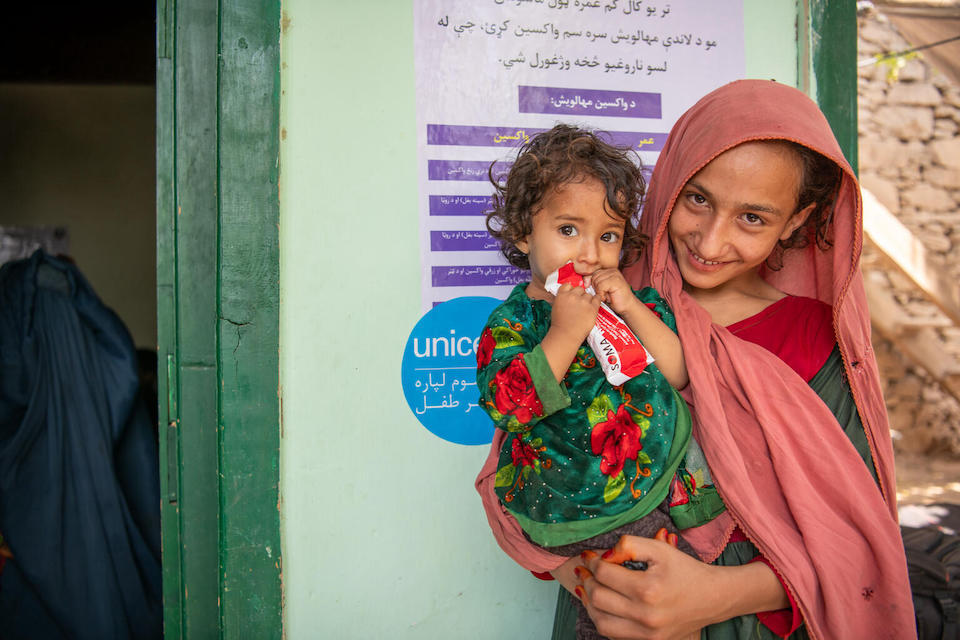
Emergency shelters, temporary classrooms and Child-Friendly Spaces: UNICEF’s amazing high-performance tent
Another highly effective tool in UNICEF’s arsenal — and another great example of how UNICEF continues to innovate to improve efficiencies in delivering for children — is the High Performance Tent (HPT).
An HPT can be used to set up temporary classrooms, a health clinic, a nutrition facility or supply distribution point. It can serve as a Child-Friendly Space, a safe environment where a range of support and protection services are provided to children caught in a crisis.
In 2020, UNICEF introduced a new-and-improved multi-purpose HPT, co-created with industry partners. During development, prototypes were subjected to hurricane-force winds and below-freezing temperatures to test durability, thermal performance and ventilation rates.
After testing, and before finalizing for manufacturing, UNICEF and partners took the prototypes to different countries to see how they stood up in various climates. The final product features innovations such as durable anchoring systems, a straight-wall design, improved installation guidance and packaging into smaller bags to facilitate transport to hard-to-reach locations.
In 2022, UNICEF delivered 7,001 tents to 48 countries. By mid-2023, that number had more than doubled, with close to 14,000 going to 57 countries.
During the 2022 Ebola outbreak in Uganda, for example, the tents proved indispensable — for treating patients, to shelter families in quarantine, as children’s play spaces. It was "an opportunity to demonstrate the versatility of the tents in a health emergency facility context,” noted UNICEF Uganda Supply Assistant Tom Akoko. “Within hours, we set up tents in treatment units in Ebola epicenters, isolating suspected cases while paying special attention to the well-being of children and families.”
Watch this video to learn more about the UNICEF High Performance Tent.
Advancing innovative energy solutions to build climate resilience
Climate shocks are putting children’s health, education, safety and well-being at greater and greater risk all around the world. Ensuring the sustainability of the systems and services children rely on to survive and thrive means making those systems and services climate smart, climate resilient and climate adaptable. This is especially critical in communities that lack reliable power and water supply.
Core resources have enabled UNICEF to pioneer innovative solutions that address these issues. Efforts include helping health facilities upgrade their infrastructure. Solar-powered refrigerators, for example, have become crucial to ensuring consistent cold chain transport and storage for vaccines.
UNICEF has also helped install solar-powered water pumping systems in communities in Malawi, Mauritania, South Sudan, Uganda, Yemen and many other countries where water security is under threat.
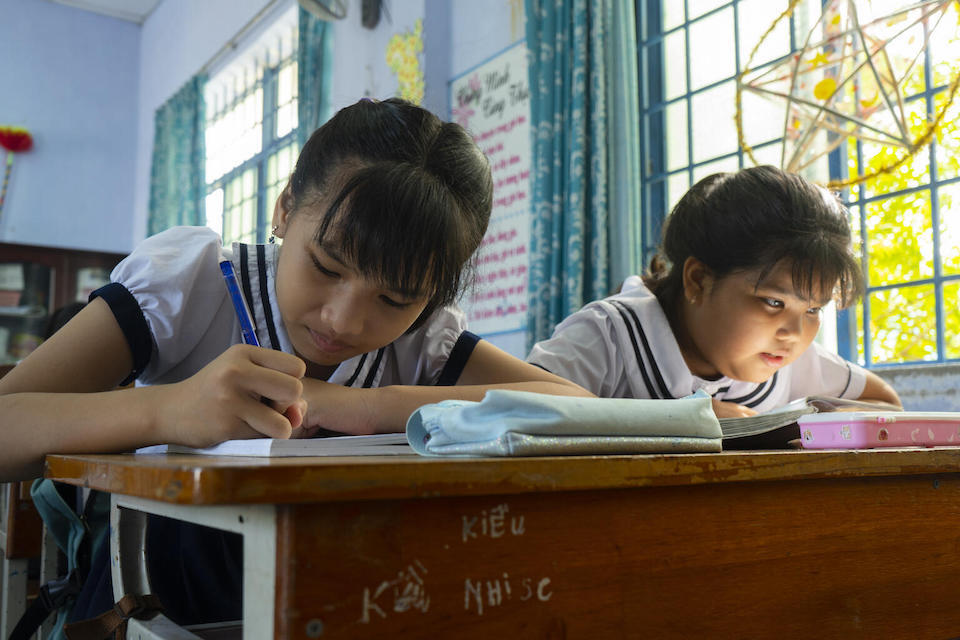
Solar energy is also helping to climate-proof schools.
In Vietnam, for example, a UNICEF study found evidence that severe weather damage to school infrastructure and related lack of dependable electricity, along with poor air quality, were threatening children’s ability to learn, disrupting classroom lessons and making the school environment generally unsafe. While companies in Vietnam had already turned to solar panels to ensure reliable green energy supplies, little work had been done to similarly equip the nation’s 40,000 schools.
UNICEF experts have since taken steps to change that — producing a comprehensive roadmap for rooftop panel installations and providing other support to help spur a national initiative in the country.
The research and evidence generation, the implementation and scale-up of a national solar solution — all of that takes steady programmatic funding support.
None of these innovations or initiatives would have been possible without ongoing U.S. Government support for UNICEF core resources. Urge your elected officials to vote YES to contribute to UNICEF for fiscal year 2024.
HOW TO HELP
There are many ways to make a difference
War, famine, poverty, natural disasters — threats to the world's children keep coming. But UNICEF won't stop working to keep children healthy and safe.
UNICEF works in over 190 countries and territories — more places than any other children's organization. UNICEF has the world's largest humanitarian warehouse and, when disaster strikes, can get supplies almost anywhere within 72 hours. Constantly innovating, always advocating for a better world for children, UNICEF works to ensure that every child can grow up healthy, educated, protected and respected.
Would you like to help give all children the opportunity to reach their full potential? There are many ways to get involved.



